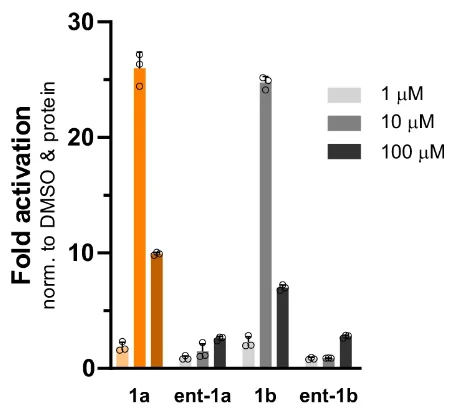In Nature Communications, researchers have published their discovery of a compound found in carrots that promotes mitochondrial health and improves the physical abilities of older mice.
Walking down the caloric restriction pathway
Although it is difficult to establish in human beings, caloric restriction is one of the most well-known interventions known to be effective across species [1]. Previous work has found that this is due to the activation of the AMPK pathway in response to reduced available mitochondrial energy (ATP), and this pathway can be activated by compounds such as resveratrol [2]. However, the evidence for resveratrol’s effectiveness in people has been found to be lacking, and one of the reasons its poor biological availability [3].
Therefore, these researchers sought something better. They used a library of 1,200 molecules that are commonly found in traditional Chinese medicine and herbal extracts and tested to determine whether they decrease ATP production in a well-established line of human liver cancer cells after 15 minutes of exposure. They also tested for overnight increases in NRF2, a compound that decreases with age and protects against oxidative stress [4].
An entirely novel compound with mitochondrial effects
While the compound described in this paper is naturally occurring, it was previously unknown to science, having never been isolated or chemically described. This is a polyethylene derived from the roots of carrots (Daucus carota), and the authors named it isofalcarintriol (IFT). This paper goes into detail on this compound, describing its structure and synthesis. This compound needs a specific configuration to work; chemically mirroring it into an enantiomer renders it almost entirely ineffective at increasing cellular NRF2.

The researchers found that administering IFT to cells caused a reduction in ATP after 15 minutes but a bounce-back increase after an hour. However, administering it to C. elegans, worms that are commonly used to model aging, increased ATP production over the long term. AMPK was activated in both worms and cells.
However, despite the increased ATP production, the researchers found that IFT decreases, rather than increases, oxidative stress in C. elegans worms over the long term. 48 hours after exposure, worms given IFT produced far less hydrogen peroxide than a control group and increased their resistance to induced oxidative stress. Human Alzheimer’s and Huntington’s proteins paralyze these worms, but IFT was able to partially restore their movement.
The researchers tested its ongoing effects on mitochondrial respiration in worms, cells and mice. Oxygen consumption was reduced in all three models, although its effects were stronger in female mice than male ones.
Finally, the concentration used in this study was found to destroy the ability of human liver and colon cancer cells to grow in a soft substrate, resulting in their extinction in this experiment.
Improves metabolism in mice
The researchers fed mice a high-fat diet in order to create a phenotype that resembles human obesity and diabetes. While IFT, administered at 2.5 milligrams per kilogram, did not change the body mass or blood lipids of treated mice, it also did not appear to have toxic effects. After 9 weeks of treatment, the IFT-treated mice had better glucose sensitivity than their untreated counterparts. After 16 weeks, mice given IFT had lower fasting blood glucose.
The treated mice had considerably more mitochondria than the untreated mice, suggesting that IFT promotes mitochondrial biogenesis. This was supported by treadmill results: female mice that were given IFT and a high-fat diet had considerably more endurance than a control group on a high-fat diet alone. This seemed to be true for males as well, but those results did not reach statistical significance.
Positive effects were also seen in very old mice that were fed regular chow. While blood glucose was unaffected in this group, markers of frailty and in phenotypical age were reduced. Unlike in the previous experiments, the effects here were considerably more pronounced in male mice than in females, whose results did not reach statistical significance. Grip strength, anti-inflammatory cytokines, and heart rate were all also affected by IFT.
However, while it clearly affected the healthspan of mice, IFT did not improve their lifespan. This might suggest limits to the effects of AMPK- and NRF2-targeting molecules as a whole. Clearly, caloric restriction and its mimetics may be effective in improving biological parameters, at least in model organisms; however, for improving lifespan along with healthspan, other techniques are needed.
Literature
[1] Fontana, L., Partridge, L., & Longo, V. D. (2010). Extending healthy life span—from yeast to humans. science, 328(5976), 321-326.
[2] Zheng, J., & Ramirez, V. D. (2000). Inhibition of mitochondrial proton F0F1-ATPase/ATP synthase by polyphenolic phytochemicals. British journal of pharmacology, 130(5), 1115-1123.
[3] Walle, T. (2011). Bioavailability of resveratrol. Annals of the new York Academy of Sciences, 1215(1), 9-15.
[4] Shih, P. H., & Yen, G. C. (2007). Differential expressions of antioxidant status in aging rats: the role of transcriptional factor Nrf2 and MAPK signaling pathway. Biogerontology, 8, 71-80.




